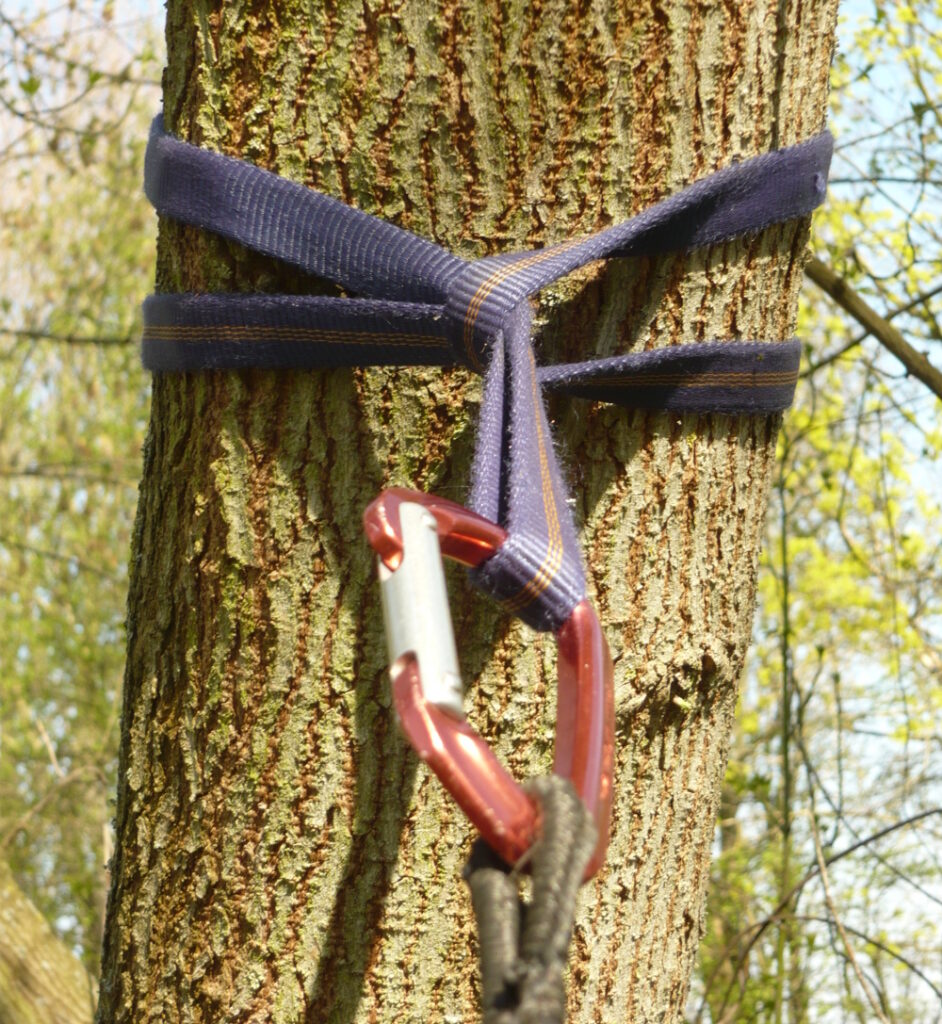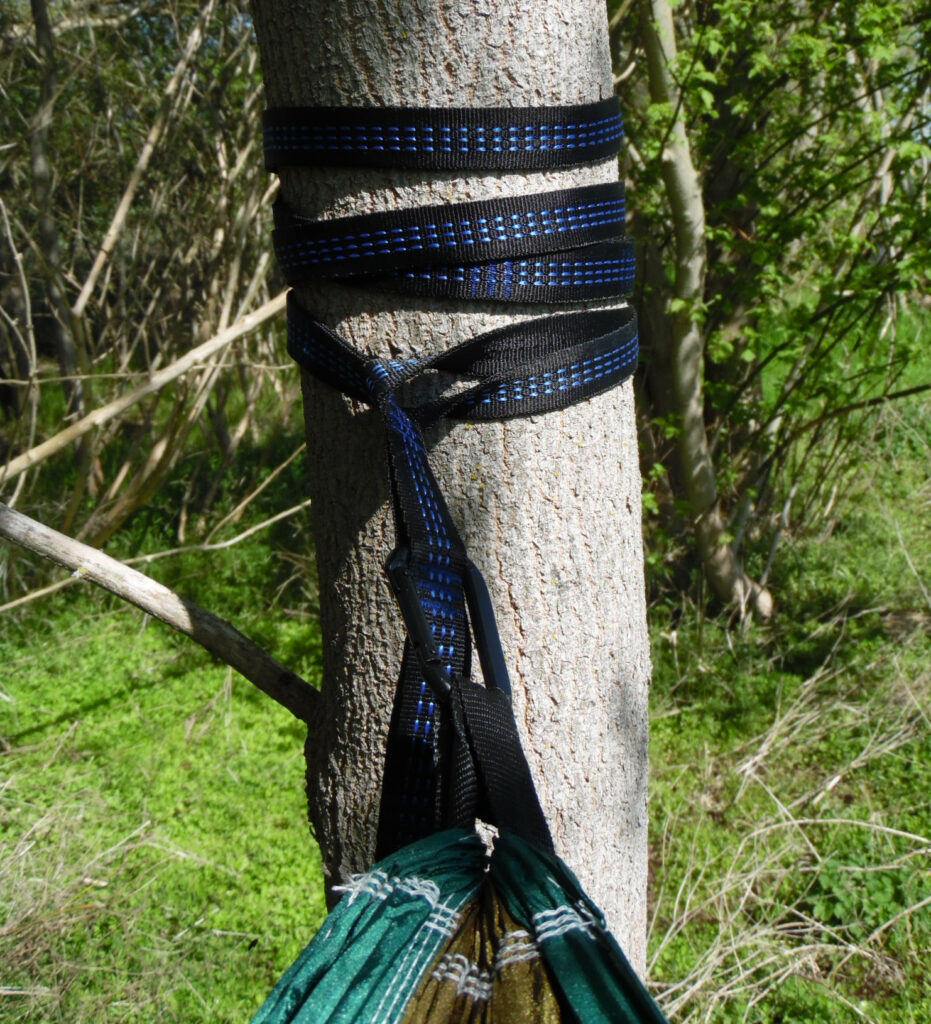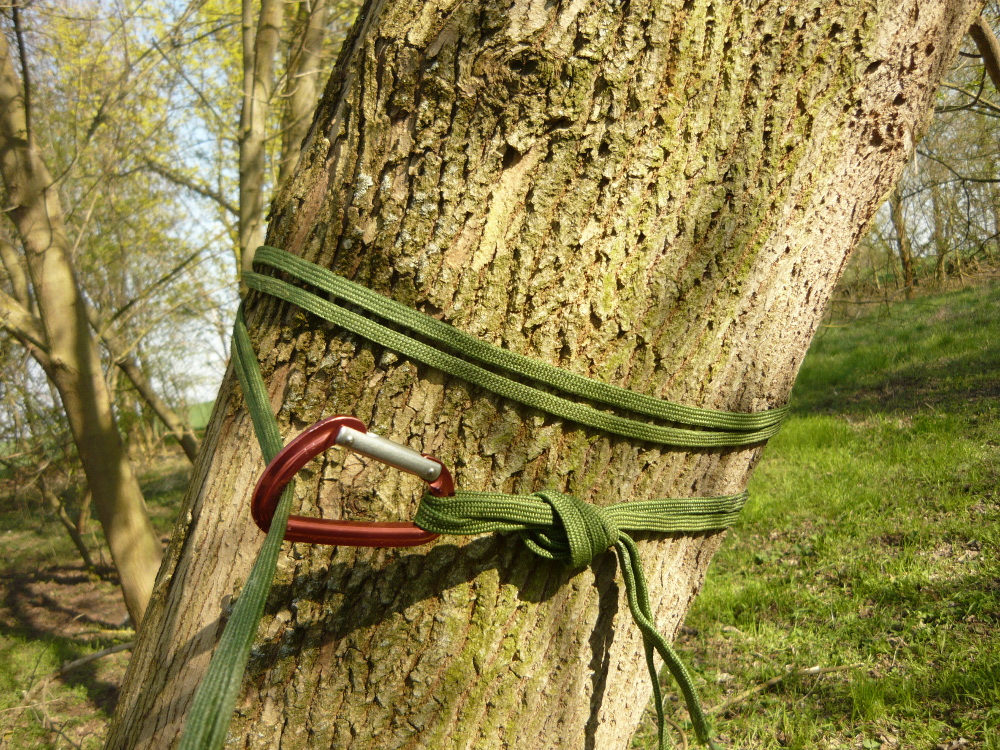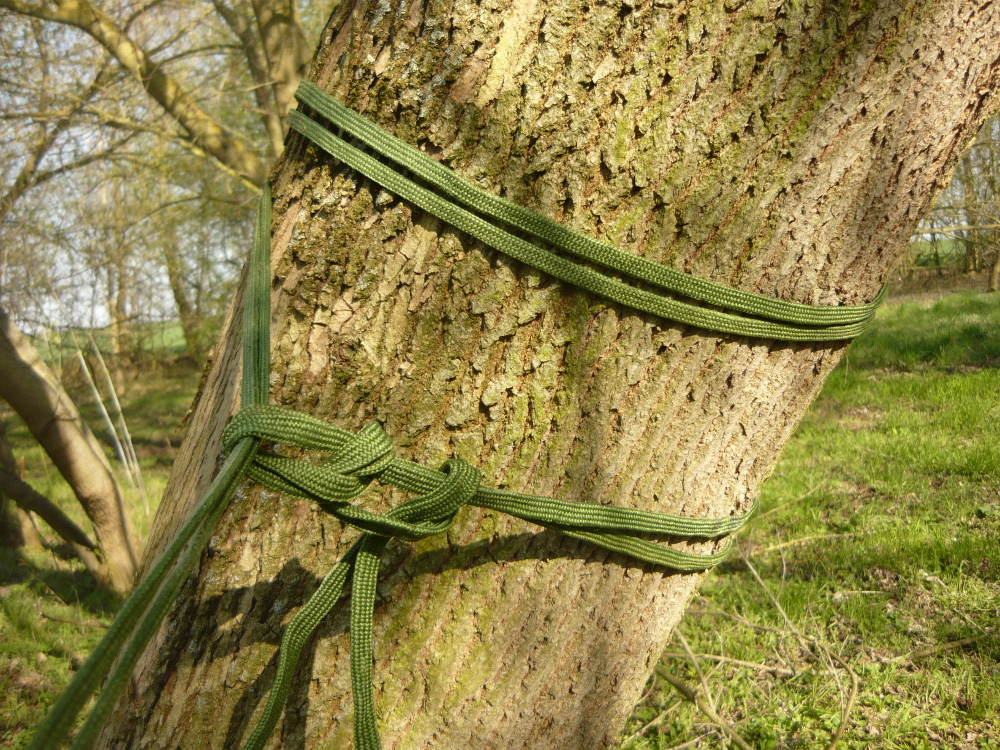In this article you will learn how to quickly and safely attach your hammock to a tree. There are different ways of hanging – I describe my favorite 3 best ways to hang a hammock.
The simplest hammock attachment works with webbing slings* and carabiners*. Alternatively, you can also use tree-friendly suspension sets like tree straps or the Amazonas T-Strap.
3 Best Ways to Hang a Hammock in a Tree
If you want to attach a hammock to a tree, there are a few simple principles to follow. The following steps are important to ensure a secure attachment and a comfortable lying position in the hammock. This article describes all the important things you should pay attention to.
1. Climbing Slings and Carabiners
A suspension of the hammock with climbing slings* and carabiners is my preferred attachment for hammocks. In climbing, they are standard equipment and are therefore cheap and versatile. In hammock camping, there are constantly situations where things need to be hung up somewhere quickly. For example, the backpack during a break, so that it does not stand on the wet ground and you can comfortably search around in it at body height. I use almost only light wire gate carabiners ($12)* or automatic carabiners.
How do I attach a hammock with slings and carabiners?
To attach a hammock to a tree there are several options. The longest possible climbing slings should be purchased. My longest are the 360cm climbing slings – 240cm are most common and will also work.

Several climbing slings can be connected to each other. This allows you to attach hammocks between trees that are further away. Rarely are trees at a perfect distance from each other. Too long webbing slings can be shortened by additional wraps around the tree.

Which carabiner for hammock suspension?
Automatic carabiners can not open unnoticed, as can happen with simple snap or screw carabiners. I can only advise against screw-gate carabiners. They tend to jam under load. Then the screw lock is very difficult to release. Then rather do without the security and buy wire-gate carabiners* from climbing or simple snap carabiners.
2. Tree Straps
Tree straps are the best solution for trees to hang hammocks quickly and safely. Due to the wide straps they are very gentle to the tree bark. for length adjustment the carabiner of the hammock can simply be hooked into one of the different loops. I use the tree straps from Overmont and they have served me faithfully for years.

In many beginner hammock kits are simple tree straps included – for example in the Hammock Kit from NaturFun.
Disadvantages of Tree Straps
The only disadvantage compared to climbing slings is the weight. Tree Straps are quite heavy. A long tree strap can weigh up to 200g. in contrast, a long climbing sling made of Dyneema weighs only a fraction.
Ultralight Tree Straps
Because of the high weight of simple tree straps, several manufacturers have developed ultra-light tree straps. They combine the easy length adjustment and the tree-protecting function of the straps with extremely light and thin climbing material. Such ultralight tree straps are the Hummingbird Hammocks Tree Straps* (1,55 oz) or the ENO Helios Hammock Suspension System* (4,3 oz).
3. Hammocks With Long Webbing
Some hammocks are supplied by the manufacturer with very long attachment cords or webbing. I am not a friend of it, because the long webbing constantly knot into each other. This makes set up and take down a fiddly job. But even here you can simplify your life with
carabiners.

Here I have knotted an eye from a figure-eight knot into the end of the hammock’s webbing. The webbing is placed twice around the tree and then connected with a carabiner through the eye of the figure-eight knot and the strap from the hammock. Always try to make at least one complete wrap around the tree so that the hammock does not slip. With additional windings you can adjust the length of the cords to the distance of the trees.
Hang a Hammock in a Tree without a Carabiner
If you do not have a carabiner, you can also complete the loop with the end from the fastening tape. Simply, like the carabiner, put around the hammock’s webbing and then secure the loop from going up with two half hitches.

The Ideal Position of a Hammock between Trees
The typical beginner’s mistake when hanging hammocks is often the wrong distance between the trees. Furthermore, the hammock is often stretched too tight – this can lead to tearing of the hammock and exerts strong tensile forces on the trees, which can damage small trees.

What is the ideal hammock tree distance?
The perfect distance for the hammock between the two trees is 16 to 19ft (5 – 6m). At this distance, you can attach the hammock to the trees at chest height. Unfortunately, this distance is not always available in the favorite place. In this case, only longer webbing slings or tree harnesses will help to bridge a larger distance. The further the trees are from each other, the higher the hammock must be hung from the trees.
How high on a tree do you hang a hammock?
Of course, that varies from person to person. I prefer to lie just above the ground. So about 30 cm above it, just so that I don’t touch anything with my butt when I’m swinging. So I can get in and out comfortably and reach well the things on the ground that I would like to use in the hammock.
For this height, I attach the hammock at 5 – 6ft (1,5 – 1,7m) height to both trees. However, the height also depends on the stretch of the hammock and its suspension. The more stretch, the higher the hammock needs to be attached to the tree.